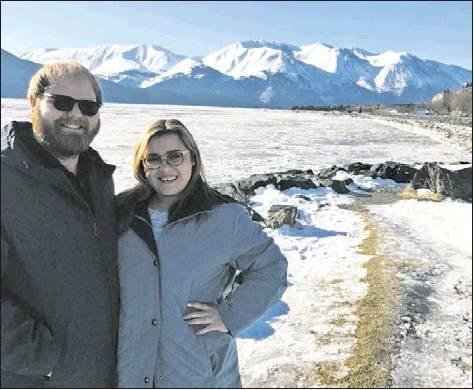A wintry week in the 49th state
Ihave always loved to travel. When my boyfriend, Troy, was asked to work in Anchorage, Alaska, for 2 weeks, I could not pass up the chance.
I bought a ticket and jumped on a plane to spend the …
This item is available in full to subscribers.
Subscribe to continue reading. Already a subscriber? Sign in
Get 50% of all subscriptions for a limited time. Subscribe today.
Please log in to continueNeed an account?
|
A wintry week in the 49th state
Ihave always loved to travel. When my boyfriend, Troy, was asked to work in Anchorage, Alaska, for 2 weeks, I could not pass up the chance.
I bought a ticket and jumped on a plane to spend the 2nd week with him.
Because of depictions in movies and books, there are a lot of misconceptions about the 49th state. Most of these misconceptions revolve around the “freezing tundra:” that it is bitter cold and snowing all of the time, that the natives live in igloos and travel by dog sled, that primitive survival is a common way of living, and that there are a lot of bears.
Thankfully I can debunk all of them.
After 4 very long flights, I arrived in Anchorage to sunshine and clear skies. The temperature was around 25 degrees, and it was comfortable.
This was the forecast for the duration of my stay.
I had packed warm clothes, sweater, coat and fuzzy socks. But it was not until Sunday when we were packing to go to the airport that it snowed.
Native Alaskans are nice, and those in Anchorage most certainly lived in houses and drove salt-covered cars. Many Alaskans haul snowmobiles in the beds of their trucks.
I was able to see a bit of dog sledding.
The timing of my trip was extremely fortunate, as the Iditarod dog sled race began the day before we left.
The ceremonial start in downtown Anchorage was part of Fur Rendezvous (or “Fur Rondy”), a 2-week festival including an art show, carnival and foot race.
This foot race, known as Running with the Reindeer (much like Running of the Bulls in Pamplona, Spain) featured natives and tourists dressed in ridiculous costumes or bathing suits, and a herd of reindeer from a local rescue. Thousands of people flocked to 4th street, the heart of Anchorage, for these spectacular events.
While it is not uncommon to see moose near the city, bears do not care to be near civilization. Black, brown, and polar bears all live in Alaska, but the only place we had a chance to see any were at the Alaska Wildlife Conservation Center in Portage, Alaska.
The Conservation Center houses wood bison, wolves, reindeer, elk, moose and foxes, among others. It was a lovely facility, nestled amongst the trees of the Ghost Forest, left by the 1964 earthquake that struck the Turnagain Arm area.
The most interesting part of our journey was visiting Whittier. Once a military base, Whittier is on Prince William Sound, the world’s most northerly deep water ice-free port.
After traveling through a 2.5 mile, one-way, one-lane tunnel, we stopped for lunch at one of the town’s only restaurants.
Whittier is home to around 200 residents who live in one building. Everyone knew we were not from there. After learning we had traveled from South Carolina, the locals had a good laugh while we enjoyed a cup of hot clam chowder and a cold Alaskan beer.
Visiting Alaska for me was the experience of a lifetime.
The mountains were breathtaking, the sunsets were beautiful, and the reindeer sausage was just as good as everyone said it would be.
As we were flying home, Troy and I began planning our next trip because we just couldn’t get enough.
Many people and websites recommend going in the summer, but our winter Alaska experience was splendid!
Other items that may interest you










Comments
No comments on this item Please log in to comment by clicking here